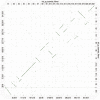A chromosome-level reference genome for the Versatile Fairy Shrimp, Branchinecta lindahli
- PMID: 36223244
- PMCID: PMC10019023
- DOI: 10.1093/jhered/esac057
A chromosome-level reference genome for the Versatile Fairy Shrimp, Branchinecta lindahli
Abstract
We present the novel reference genome of the Versatile Fairy Shrimp, Branchinecta lindahli. The Versatile Fairy Shrimp is a freshwater anostracan crustacean found across the western United States from Iowa to Oregon and from Alberta to Baja California. It is an ephemeral pool specialist, living in prairie potholes, irrigation ditches, tire treads, vernal pools, and other temporary freshwater wetlands. Anostracan fairy shrimp are facing global declines with 3 species in California on the Endangered Species list. This species was included in the California Conservation Genomics Project to provide an easily accessible reference genome, and to provide whole-genome resources for a generalist species, which may lead to new insights into Anostracan resiliency in the face of climate change. The final gapped genome comprises 15 chromosome-length scaffolds covering 98.63% of the 384.8 Mb sequence length, and an additional 55 unscaffolded contigs.
Keywords: Anostraca; CCGP; California Conservation Genomics Project; branchiopoda; crustacean; vernal pool.
© The American Genetic Association. 2022.
Figures



References
-
- Aguilar A, McClintock K, Maeda-Martínez G, Murugan H, Obregón-Barboza AM, Christopher Rogers D.. High intraspecific genetic divergence in the versatile fairy shrimp Branchinecta lindahli with a comment on cryptic species in the genus Branchinecta (Crustacea: Anostraca). Hydrobiologia. 2017;801:59–69.
-
- Beladjal L, Vandekerckhove TTM, Muyssen B, Heyrman J, de Caesemaeker J, Mertens J.. B-chromosomes and male-biased sex ratio with paternal inheritance in the fairy shrimp Branchipus schaefferi (Crustacea, Anostraca). Heredity. 2002;88(5):356–360. - PubMed
-
- Bohonak AJ, Simovich MA, Davis KB.. Landscape homogenization threatens the genetic integrity of the endangered San Diego fairy shrimp Branchinecta sandiegonensis (Branchiopoda: Anostraca). J Crustac Biol. 2013;33(5):730–740.
Publication types
MeSH terms
Grants and funding
LinkOut - more resources
Full Text Sources
Miscellaneous

